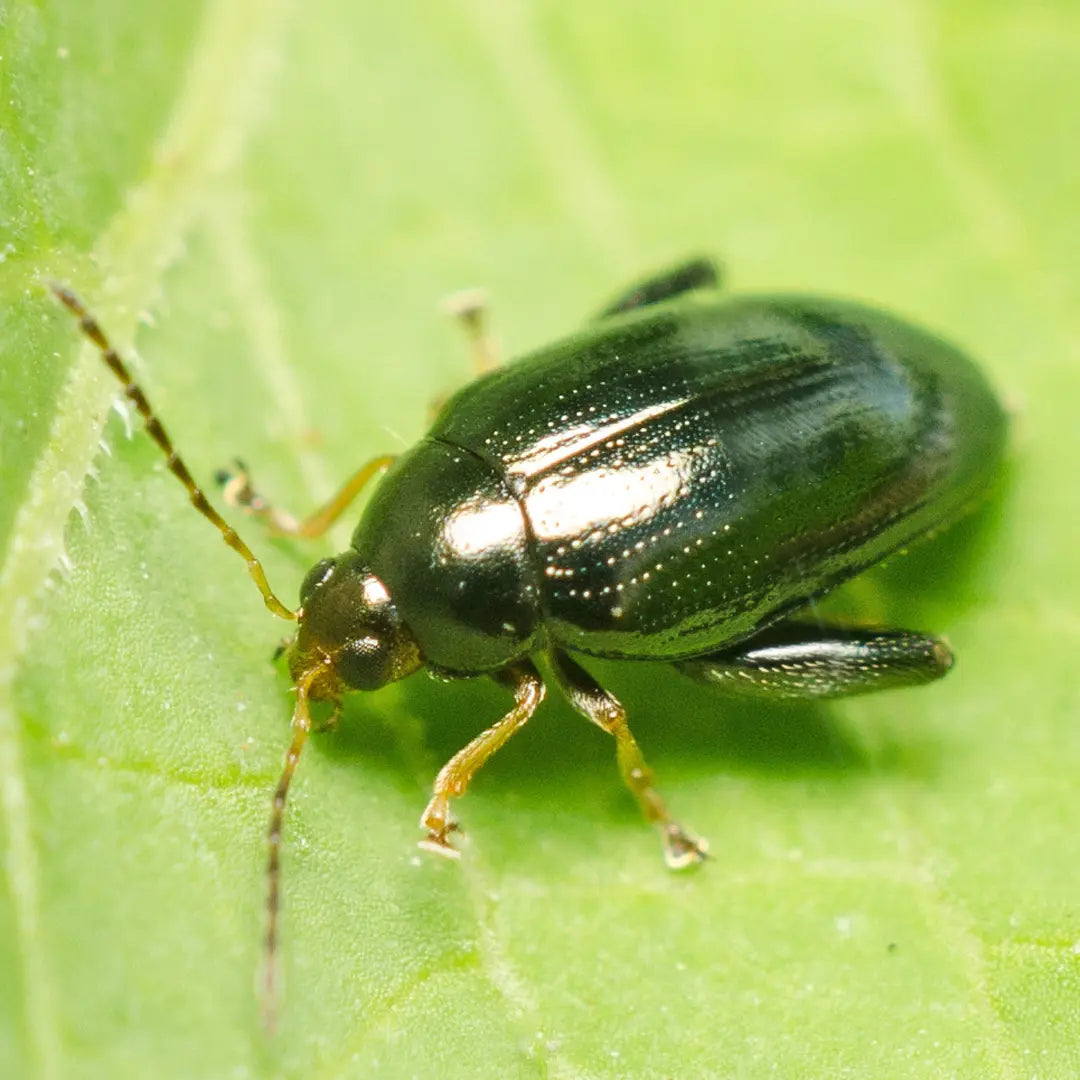
Flea Beetles
Fascinating and fiery, chilli plants have won the hearts of gardeners and spice enthusiasts across the globe. However, these beloved plants face a battle in the garden with an often unseen enemy: flea beetles. In New Zealand, these unwelcome pests thrive in the warm, wet summers, creating havoc in your chilli paradise. Fortunately, we're here to help. Our comprehensive guide will equip you with the knowledge and tools to identify, prevent, and naturally control flea beetles, so your chilli plants can flourish unharmed.
Tiny Jumpers with Voracious Appetites
Flea beetles are small, shiny insects that belong to the Chrysomelidae family. There are several species, but most are between 2 and 5 millimetres in length. They have enlarged hind legs that enable them to jump incredible distances, similar to fleas—hence their name. These tiny pests have an insatiable appetite for plant leaves, especially those of chilli plants. When flea beetles munch on the foliage, they create tiny, round holes in the leaves, often called "shotholes," which can weaken the plant and reduce its ability to photosynthesize.
Collapsible content
Identification
To protect your chilli plants from flea beetles, you must first be able to identify them. Adult flea beetles are small, shiny, and often black or metallic in colour. They may have stripes or spots depending on the species. Due to their size, they can be difficult to spot, but their distinctive jumping behaviour is a giveaway.
The damage caused by flea beetles is easier to identify. Shotholes on the leaves of your chilli plants are a clear sign of their presence. In severe infestations, entire leaves may be skeletonised, and the plant's growth may be stunted. By recognising the signs of flea beetle damage, you can take action to protect your plants.
Prevention
Prevention is always better than cure. To keep flea beetles from invading your chilli garden, follow these simple preventative measures:
- Maintain good garden hygiene: Remove plant debris and weeds, as these can harbour flea beetles and their larvae.
- Rotate your crops: Plant chillies in a different location each year to reduce the likelihood of flea beetles returning.
- Use physical barriers: Floating row covers can keep flea beetles away from your plants, especially during their most vulnerable seedling stage.
- Attract beneficial insects: Planting flowers, such as marigolds and calendula, will attract beneficial insects that prey on flea beetles, including ladybirds and lacewings.
- Choose resistant varieties: Some chilli varieties are less susceptible to flea beetles. Consider planting these to reduce the likelihood of infestation.
Natural Treatments
If flea beetles have already infiltrated your chilli garden, don't worry—there are several natural ways to deal with these pesky intruders:
- Hand-picking: Though time-consuming, hand-picking flea beetles off your plants can be effective, especially in smaller gardens.
- Diatomaceous earth: Sprinkle this natural, non-toxic powder around your plants to deter flea beetles.
- Neem oil: Spray neem oil on your chilli plants, as it is a natural insecticide that is safe for beneficial insects.
- Beneficial nematodes: These microscopic worms can be applied to the soil to target flea beetle larvae, reducing the population before they reach adulthood.
- Trap crops: Planting crops that are more attractive to flea beetles, like radishes or mustard, can divert their attention from your chilli plants.
Chemical Treatments
If natural methods aren't enough, and you decide to use chemicals to control flea beetles, consider the following options:
- Pyrethrin-based insecticides: Derived from chrysanthemum flowers, pyrethrins are a low-toxicity option that can help control flea beetles on your chilli plants.
- Spinosad: This organic compound, derived from soil-dwelling bacteria, is effective against flea beetles and safe for most beneficial insects when used as directed.
- Systemic insecticides: These chemicals are absorbed by the plant and can provide long-term protection against flea beetles. However, they should be used with caution, as they can be harmful to beneficial insects and pollinators.
Always read and follow the label instructions when using chemical pesticides, and use them as a last resort when other methods have failed.
Flea beetles can be a formidable adversary for your chilli plants, but with the right knowledge and tools, you can protect your garden from these voracious pests. By focusing on prevention and employing natural control methods, you can maintain a healthy, thriving chilli garden without resorting to harsh chemicals. With a bit of effort, you'll be able to enjoy bountiful harvests of fiery chilli peppers, free from the ravages of flea beetles.



